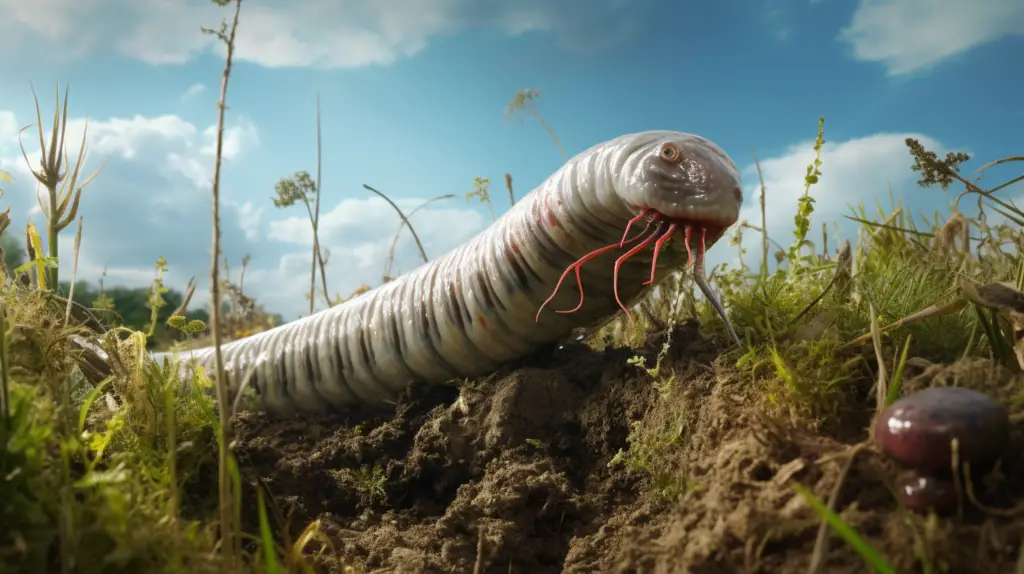Hammerhead worms, also known as bipalium or broadhead planarians, are a fascinating subject of study in the realm of biology. These worms, named for their unique, hammer-like head shape, have caught the attention of scientists and nature enthusiasts due to their peculiar characteristics, behavior, and biological mechanisms. As one of the world’s most unique land-dwelling flatworms, they hold a variety of intriguing secrets.
Let’s dive into 25 fascinating facts about hammerhead worms that cover everything you need to know.
1. Geographical Distribution: Hammerhead worms are widely distributed worldwide and are found in many environments, particularly in tropical and subtropical regions, including Asia, Africa, Australia, and the Americas.
2. Distinctive Shape: Their name “hammerhead worms” originates from their unique head shape, which is broad and flat, similar to a hammer or an axe blade.
3. Invasive Species: Certain species like Bipalium kewense are considered invasive in many regions because they can thrive and multiply rapidly in new environments, often at the expense of other local species.
4. Hermaphrodites: Hammerhead worms are hermaphrodites, meaning each individual possesses both male and female reproductive organs.
5. Size Variations: Depending on the species, these worms can range from a few inches to over a foot in length.
6. Colorful Variety: The color of hammerhead worms varies greatly, from dark brown to bright yellow, with some species having vibrant stripes down the length of their bodies.
7. Carnivorous Diet: Hammerhead worms are carnivorous, feeding primarily on other invertebrates like snails, slugs, and occasionally other worms.
8. Extraordinary Hunters: These worms secrete a layer of mucus to move, which also helps trap their prey. They also have the ability to extend their throats outside their bodies to envelop and digest their victims.
9. Toxin Producers: Hammerhead worms produce tetrodotoxin, a powerful neurotoxin also found in pufferfish. This toxin aids them in paralyzing and consuming their prey.
10. Predator Resistance: The same toxin that helps them paralyze their prey also serves to deter predators. Many animals avoid them due to this toxic characteristic.
READ MORE: 25 Facts About Bowel Cancer, aka Colorectal Cancer | All You Need to Know
11. Asexual Reproduction: Hammerhead worms can reproduce asexually through a process known as fragmentation. A portion of the tail detaches and eventually grows into a new worm.
12. Egg Laying: In sexual reproduction, hammerhead worms lay eggs that are encased in a cocoon, which provides protection until they hatch.
13. Mating Rituals: During the mating process, two worms exchange sperm. After several days, the worms lay their fertilized eggs and cover them in a protective cocoon.
14. Slow Growers: Growth rates in hammerhead worms are relatively slow. It may take a few months for a new worm to grow from a fragment to a fully-grown adult.
15. Regeneration Abilities: Like other planarians, hammerhead worms possess remarkable regenerative abilities. They can regenerate an entire worm from just a small fragment of their body.
16. Nervous System: Hammerhead worms have a relatively complex nervous system for an invertebrate, including a brain, nerve cords, and sensory organs.
17. Long Lifespan: In optimal conditions, some hammerhead worms can live up to several years.
18. Nocturnal Creatures: Hammerhead worms are mostly nocturnal, hunting and being active during the night and hiding in the soil or under objects during the day.
19. Sensory Capabilities: These worms use chemoreceptors on their heads to detect prey and navigate their environment.
20. Detrimental to Agriculture: Hammerhead worms can have a negative impact on agriculture, as they prey on earthworms, which are important for soil health.
21. Limited Medical Research: There is limited research into the potential medical uses of hammerhead worms. However, their regenerative abilities have been a topic of interest.
22. Not a Pest Threat to Humans: Despite their invasive nature and potential agricultural harm, hammerhead worms pose no direct pest threat to humans.
23. Ecosystem Indicators: Like many invertebrates, the presence and health of hammerhead worm populations can be an indicator of ecosystem health.
24. Climate Change Vulnerability: Changes in temperature and humidity due to climate change can significantly impact hammerhead worm populations, as they require moist conditions to survive.
25. Conservation Status: There is currently insufficient data to classify the conservation status of many hammerhead worm species. Some species are thriving and invasive, while others may be more vulnerable to habitat loss.
The world of hammerhead worms is as intriguing as it is complex. These extraordinary creatures, with their unique hunting tactics, regenerative abilities, and unusual reproductive methods, remind us of the immense diversity and intricacy found in the natural world. Despite their potential harm to certain ecosystems, their study can significantly contribute to our understanding of biological processes and ecosystems.



